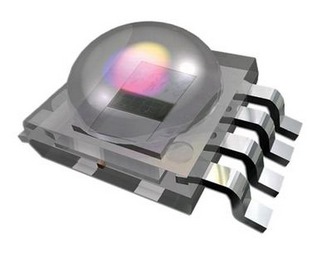 Smart Sensor Technology - With the development of semiconductor integration technology, microprocessors and memories are constantly advancing, and sensitive components and signal processing circuits may be integrated on the same chip, so smart sensors will become a reality. An intelligent sensor is a sensor with a microprocessor, which has functions of information detection, information processing, information memory, logical thinking and judgment. The following focuses on the application and development of smart sensors.
Smart Sensor Technology - With the development of semiconductor integration technology, microprocessors and memories are constantly advancing, and sensitive components and signal processing circuits may be integrated on the same chip, so smart sensors will become a reality. An intelligent sensor is a sensor with a microprocessor, which has functions of information detection, information processing, information memory, logical thinking and judgment. The following focuses on the application and development of smart sensors. Smart sensors generally have strong real-time capabilities. In particular, dynamic measurements often require data acquisition, calculation, processing, and output in microseconds. A series of functions of the smart sensor are performed with the support of the program. Such as the number of functions, basic performance, ease of use, and reliable work, most of them rely on software design and its quality to a certain extent. There are mainly five categories of these software. Including scale conversion, digital zero adjustment, nonlinear compensation, temperature compensation, digital filtering technology.
The research of smart sensors in China mainly focuses on professional research institutes and universities. It began in the mid-1980s. In the late 1980s, China National Defense Science and Technology University, Beijing University of Aeronautics and Astronautics, Zhejiang University and other universities and colleges successively reported research results. In the early 1990s, several domestic research institutes successfully developed practical smart sensors using hybrid integration technology, marking that the research of smart sensors in China has entered the international arena.
Smart sensors have been widely used in aerospace, aerospace, defense, technology and industrial and agricultural production and other fields. For example, it has broad application prospects in the field of robots. Smart sensors enable robots to have human-like features and brain functions that can sense various phenomena and complete various actions.
However, compared with foreign countries, the product variety and quality level of sensors and meter components in China cannot yet meet the needs of the domestic market. The overall level is still at the level of foreign countries in the early 1990s.
Therefore, in the next eight years, the sensors will focus on industrial control, automotive, communications, and environmental protection as the key service areas, with sensors, flexible components, optical components, and special circuits as the key targets, and the development of originality with independent intellectual property rights. Technology and products; Based on MEMS technology, relying on integrated, intelligent and networked technologies to strengthen the manufacturing process and the development of new sensors and instrumentation components, leading the leading products to reach and approach the advanced level of similar foreign products; Increase the variety, improve the quality and economic efficiency as the main goal, accelerate industrialization, so that the domestic sensor and instrument components of the species share of 70% "80%, high-grade products of more than 60%.
Smart sensor technology is a booming modern sensor technology. It involves various disciplines such as micro-mechanics and microelectronics, signal processing technology, computer technology, circuits and systems, neural network technology, sensing technology, and fuzzy control theory. Is a comprehensive technology. Therefore, smart sensor technology plays an extremely important role in promoting the development of the industry.
At present, the global sensor market shows a rapid growth trend in the ever-changing innovation. Relevant experts pointed out that the major technologies in the field of sensors will be extended and improved on an existing basis. Countries will compete to accelerate the development and industrialization of new generation sensors, and competition will become increasingly fierce. The development of new technologies will redefine the future market of sensors, such as the emergence and market share of new sensors such as wireless sensors, fiber optic sensors, smart sensors and metal oxide sensors.
protection board
Shenzhen Zhifu New Energy Co., Ltd. , https://www.sunbeambattery.com
